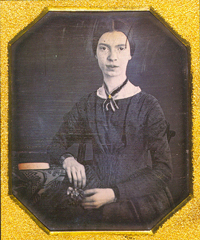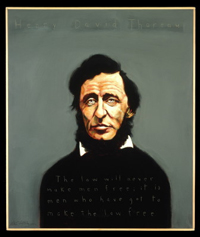
Source: student reading, libraryink, Flickr
The texts we will be reading are both related to observations of animals. The first is a poem by Emily Dickinson, a woman who spent most of her life in the same house in Amherst, Massachusetts, observing life and making poems out of those observations.
The second is part of an essay by Henry David Thoreau. You may recognize him as the writer who spent a year at Walden Pond and wrote about his time alone in the woods.
The Dickinson poem is about a snake. Dickinson didn’t give her poems titles, and even if she did, she probably wouldn’t have called this one “Snake” since it is written without using this word in the poem. Her poems are usually referred to by the first lines.
Thoreau’s text is excerpted from the essay “Walking.” In this essay, Thoreau reflects on his observation of cattle. As you read, ask yourself how the texts relate intertextually. What meaning do these texts add to each other?

Source: Emily Dickinson, Amherst College Archives, Flickr
You will begin by reading the two texts carefully and annotating them to help you understand what they are saying.
Hint #1: You might consider reading the Dickinson text first. You will be able to keep the ideas of the shorter text in your mind more easily while you read the Thoreau text than if you did it the other way around.
Hint #2: Annotate (i.e., underline, circle, and make marginal notes) as you read to help you connect ideas in the two texts when you’re finished reading.

Source: Henry David Thoreau, Americans Who Tell The Truth, Flickr
Hint #3: Everyone has his or her own way to annotate a text, but since this lesson is focused on reading and making connections between two tests, you might consider the following annotation strategy, designed specifically for paired passages:
- Read the shorter of the paired texts carefully without marking anything or writing marginal notes.
- Read the longer text marking details, ideas, and described actions that could connect this text with the first text.
- Return to the first text and mark ideas, details, and actions that connect to the second text.
Whatever notation strategy you use, look for elements of the poem and the story that are similar and could be useful when writing about the two texts.